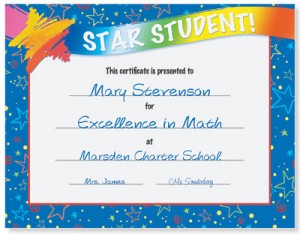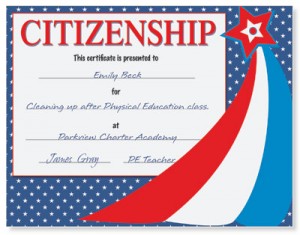Positive Reinforcement Works Wonders for the Struggling Student
“Finish your homework or you’re grounded!”
“If you don’t get those grades up, I’m taking away privileges!”
If you’ve ever uttered these words – or others like them – you’re definitely not alone. As parents, finding the best ways to help your children succeed in school can present a challen ge.
ge.
But while attempting to change your kid’s behavior by threatening to enact punishments may be a completely natural parenting fallback – and, let’s face it, sometimes just a whole lot easier – it’s actually not the best way to help a struggling student.
Though it may seem counter-intuitive, offering rewards is actually a more effective method of getting your kids (or students) to do what you want.
Here’s why.
Skinner’s Box
The year was 1948, and psychologist B.F. Skinner had a problem. He was trying to do something that many felt impossible – train pigeons. After all, pigeons aren’t exactly known for their staggering intellectual capacity.
After much trial and error, Skinner discovered that if the pigeons received positive reinforcement – in the form of a treat — every time they did what he wanted them to do – which was pushing a tiny lever — the birds learned the desired behavior very rapidly.
Skinner named his method “operant conditioning” – and the fields of psychology, education and behavior management were never the same!
The Power of Positive Reinforcement
If positive reinforcement can work wonders on a bunch of pigeons, just imagine what it can do for your student! Positive reinforcement can be something tangible, like a sticker, a lollipop, or a special certificate acknowledging their improved effort.
Positive reinforcement can also be intangible, like a hug or a smile. Praise is effective, too. When offering verbal positive reinforcement, be specific. Tell your child exactly why you’re proud of them, such as:
- “You got most of your spelling words right this week! I can tell you’ve been working hard.”
- “I can’t wait to tell the family about the good grade you got in math. How wonderful!”
- “Your teacher told me that you’ve been trying harder in class. I’m so proud of you!”
 Positive reinforcement works best when it’s delivered immediately after the desired behavior takes place, or at least as close as possible. Best of all, you don’t have to wait until your student’s behavior is absolutely perfect in order to offer positive reinforcement; in fact, you should reinforce every incremental step in order to encourage continuing progress.
Positive reinforcement works best when it’s delivered immediately after the desired behavior takes place, or at least as close as possible. Best of all, you don’t have to wait until your student’s behavior is absolutely perfect in order to offer positive reinforcement; in fact, you should reinforce every incremental step in order to encourage continuing progress.
Studies show that random rewards are the most effective way to change behavior –so mix it up! Reward all positive behaviors with a smile or a hug, and dole out the special stuff, like treats or certificates, at random intervals. Above all, be consistent and emphasize positive reinforcement over punishment.

